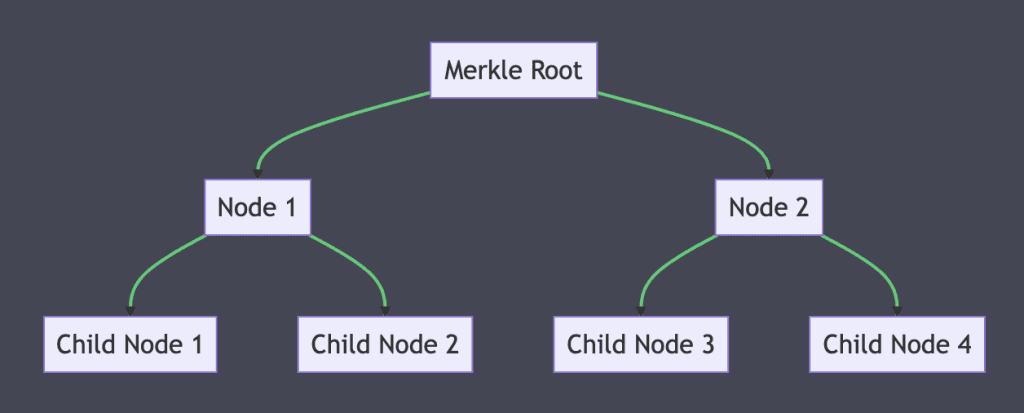Merkle trees (also known as hash trees) are a type of data structure used to store data in a secure and efficient manner. They are most commonly used in cryptography and blockchain technology. The main purpose of a Merkle tree is to provide a way to verify the integrity of data stored in a database, or in a distributed network.
Merkle trees are composed of nodes, which are data elements stored in the tree. Each node contains the hash of the previous node in the tree, usually referred to as the “parent” node, as well as its own hash value. This creates a secure chain of data. The root node, or Merkle root, is the top most node in the tree. It is an important part of the Merkle tree’s design, as it is used as the single point of reference when verifying the integrity of the stored data.
A Merkle root is a unique identifier created by hashing the data stored in a Merkle tree. This hashed data is referred to as the “Merkle root”. The Merkle root allows a user to quickly and easily check the integrity of the data stored within the Merkle tree. By using the Merkle root, a user can determine if the data inside the Merkle tree has been tampered with or modified.
The Merkle root is created by hashing the data in the Merkle tree. This data is then used to create a unique identifier, which can be used to verify the integrity of the data stored in the Merkle tree. This process can be repeated for every node in the Merkle tree, allowing a user to quickly and easily verify the data stored in the Merkle tree.
Merkle trees are an important and efficient data structure used in many technologies. By using Merkle trees, users can quickly and easily verify the integrity of the data stored in a database, or in a distributed network. The Merkle root provides a single point of reference for verifying the data stored in the Merkle tree. This makes Merkle trees an essential tool for securing data in a distributed manner.

